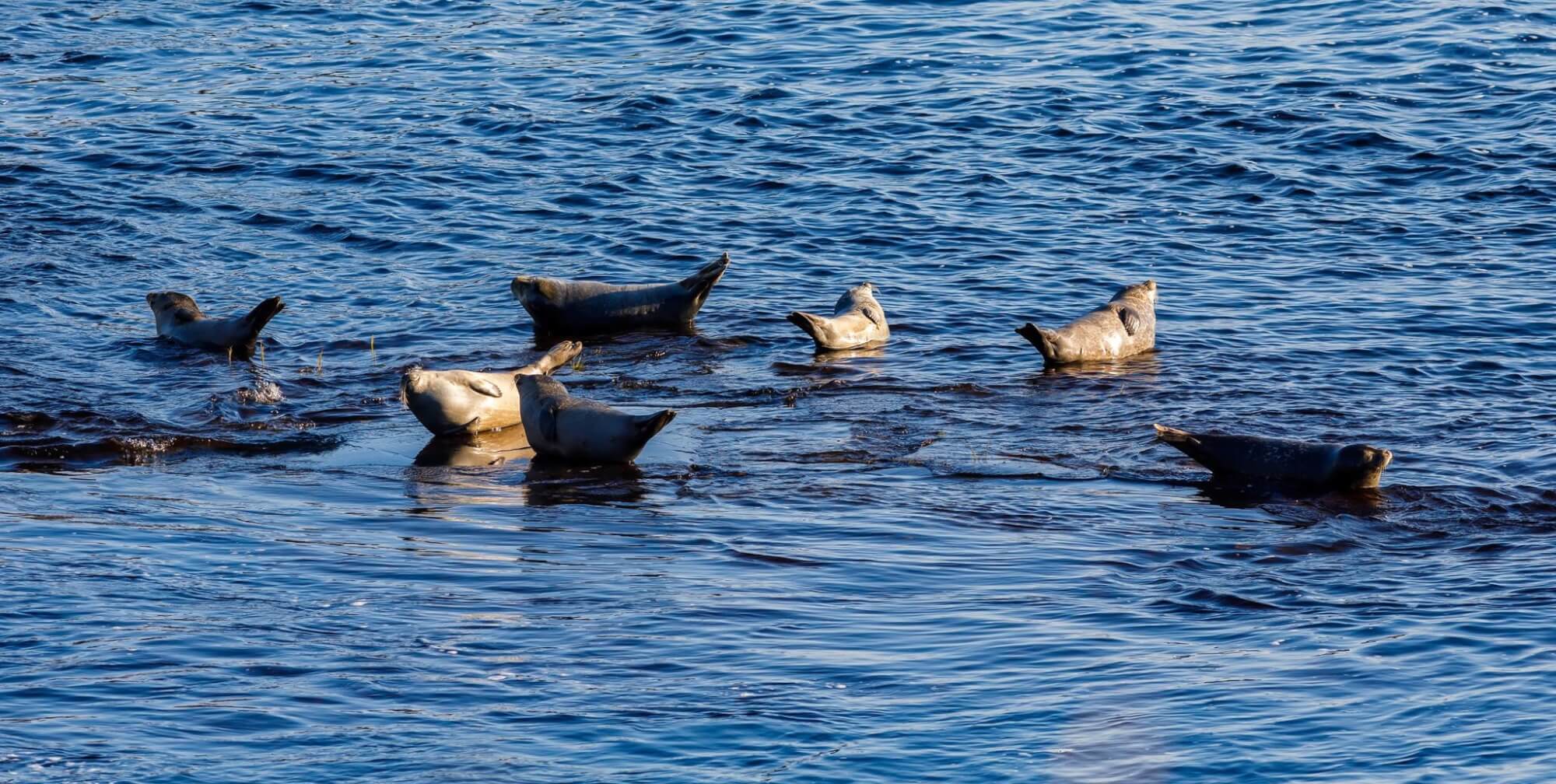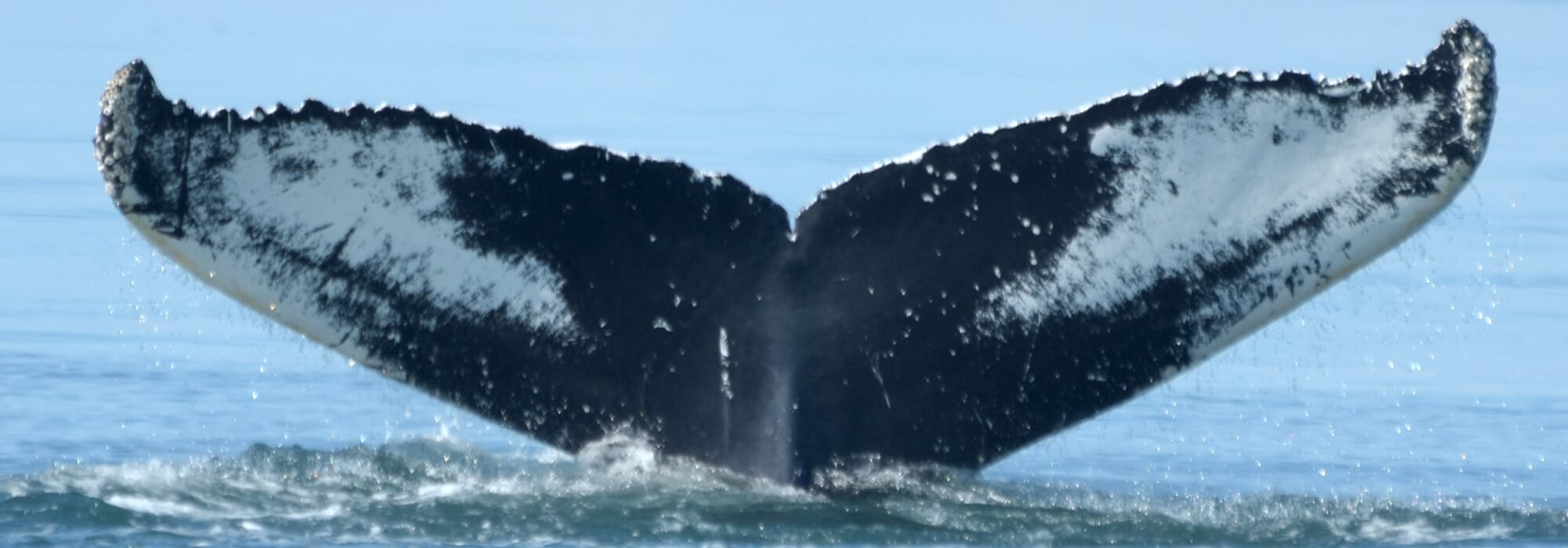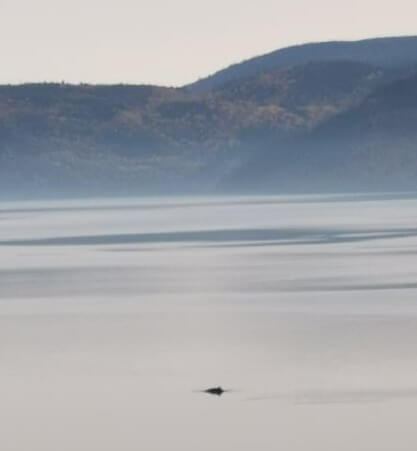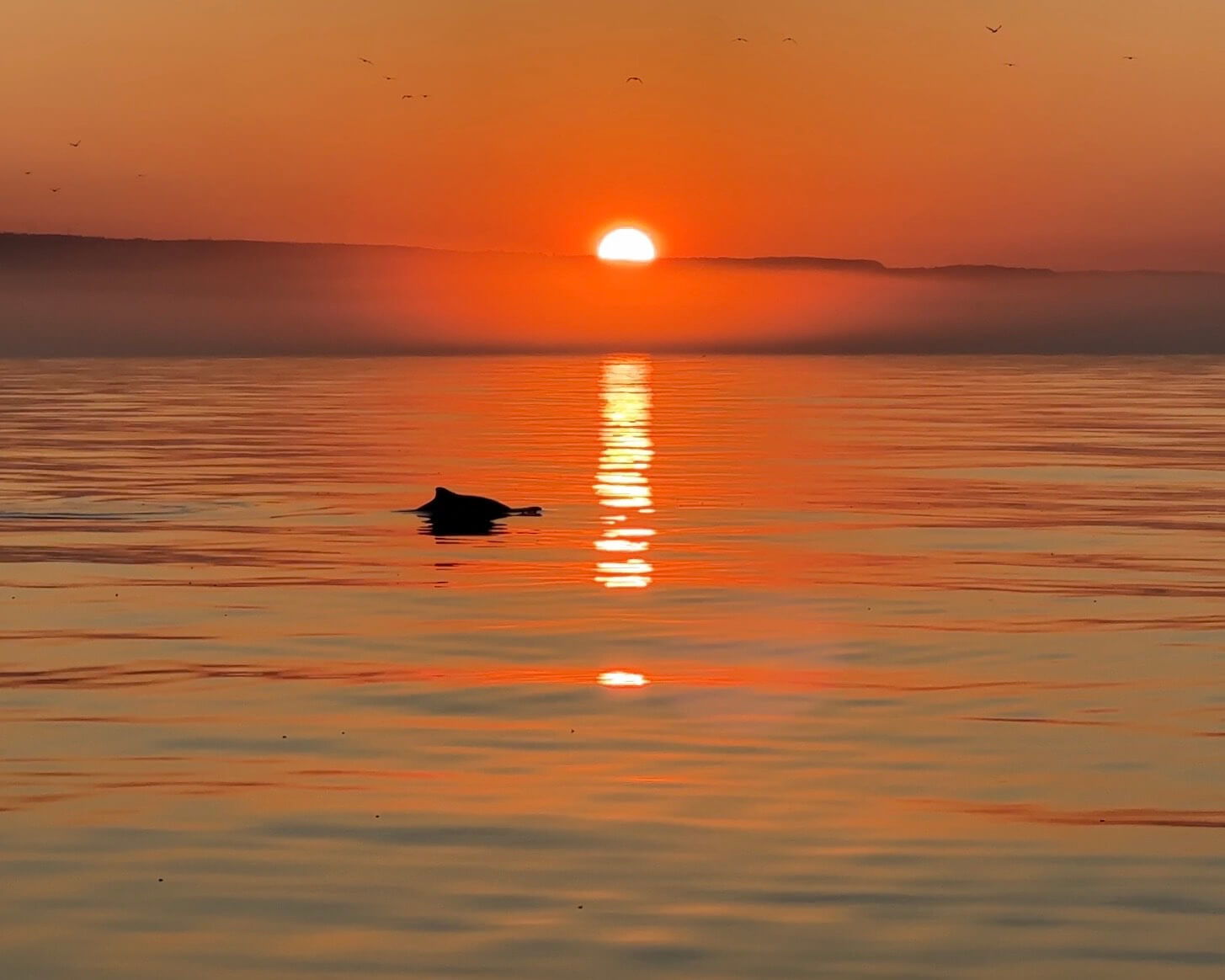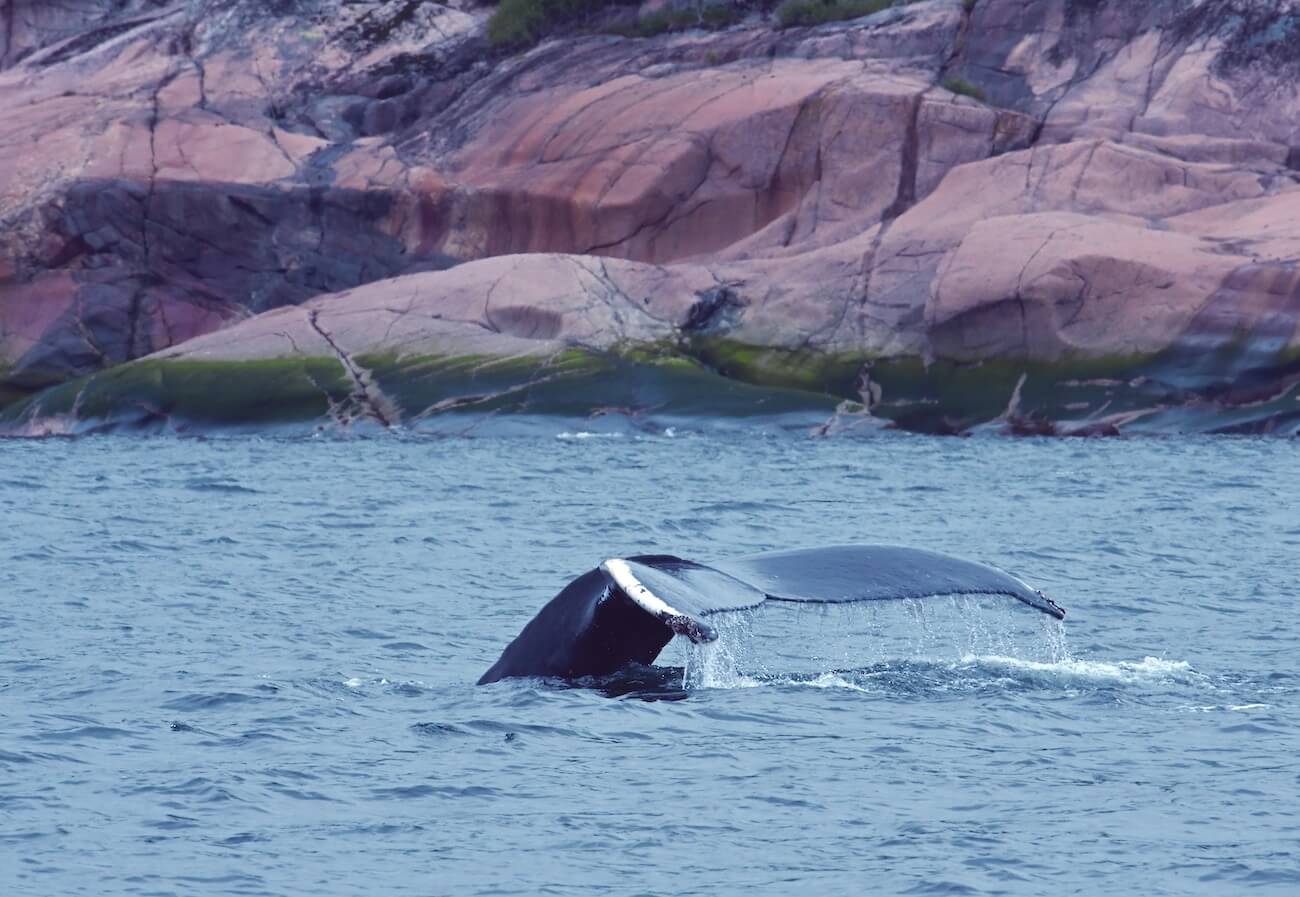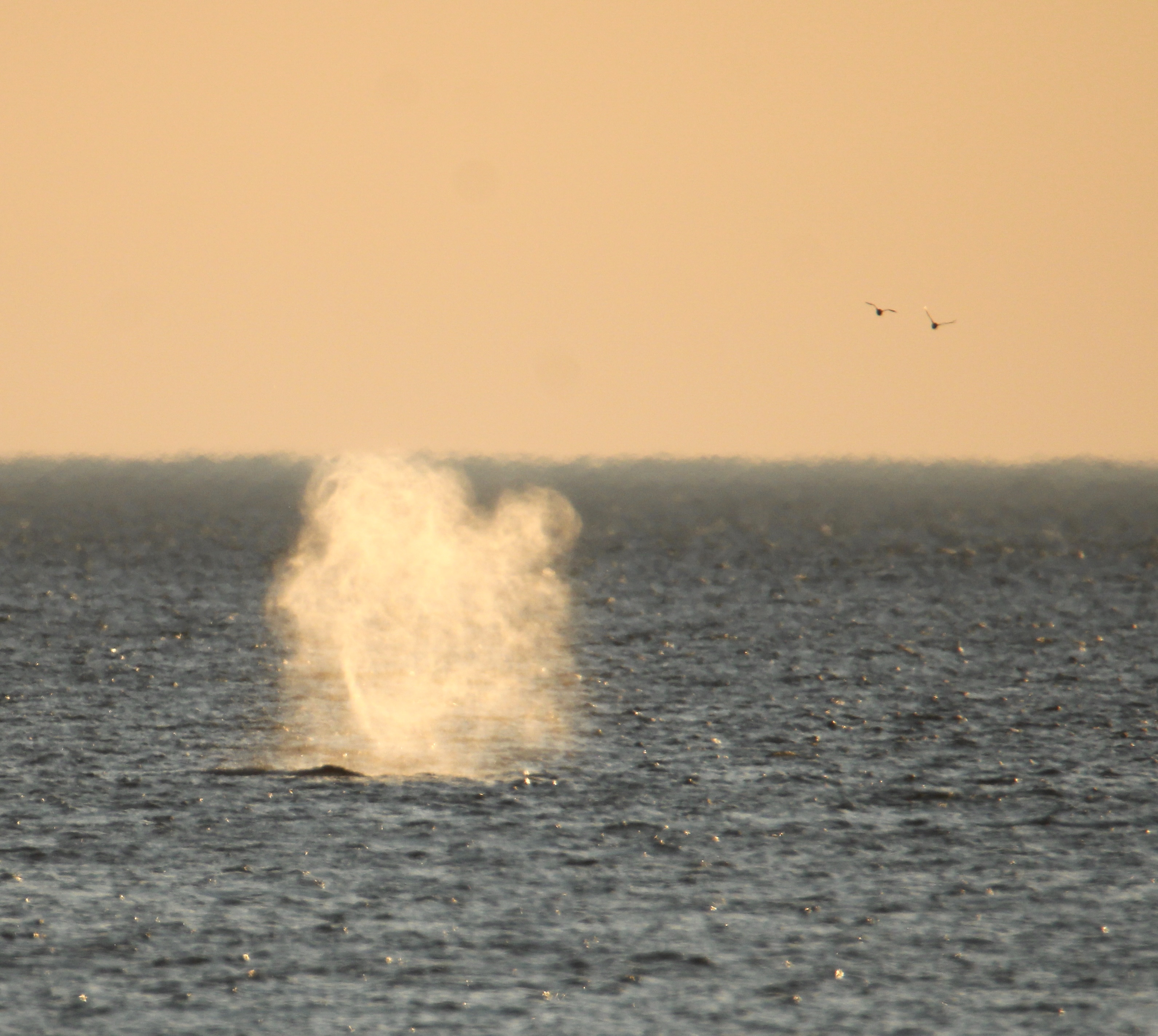On this Thanksgiving Monday afternoon, a group of kayakers is quietly paddling toward the dock at L’Anse-de-Roche when they hear a loud splash behind them. The guide turns around to see the long, tapered body of a harbour seal soar into the air. Three times in a row! “For several weeks now we sometimes see a seal’s head poking out of the water, but never before had I seen a seal breach”, he says in astonishment. In fact, seals occasionally adopt a swimming technique similar to that of porpoises to move faster while spending less energy. The undulating movements and small leaps above the surface are believed to help reduce friction between the animal’s body and the water.
Autumn dolphins and porpoises
Leaping out of the water is precisely the specialty of Atlantic white-sided dolphins, which are bringing a touch of colour to the region this season. On Saturday, Mingan Island Cetacean Study (MICS) collaborator René Roy, crosses paths with an endless horizon of white-sided dolphins between Matane and Pointe-des-Monts. “There were hundreds of them, maybe even thousands,” he claims.
During his boat trips off Sept-Îles, mariner Jacques Gélineau also reports having observed a hundred or so colourful dolphins. “They’re in small, isolated pods, but sometimes they come together, mingle and hurl themselves high in the air.” Gélineau also notes the presence of bluefin tuna, two fin whales and about ten minke whales. “On Saturday, I also saw a dozen or so porpoises,” he shares. It appears that they are starting to gather in anticipation of their upcoming migration.”
Large rorqual frenzy and big questions
Migration… this has been THE question in recent weeks. “Are there any whales still in the area? Will they be leaving soon?” These are the questions we have been constantly getting from our readers. Good news! This week, we’ve put together an article that details the migration periods of each species that frequents the St. Lawrence
Our observers, on the other hand, answer these questions in their own way, regularly forwarding their most impressive whale photos and video footage to us. Because in the Estuary, and particularly in and around the Saguenay-St. Lawrence Marine Park, humpback and fin whales are still present in large numbers and have been putting on an amazing display every week. “Last Thursday at around 4 in the afternoon, we were posted on the rocks at Essipit when we saw a humpback whale breach 31 times at close range! The sound the whale made when it landed on the water was incredible. It was a unique opportunity to witness such a spectacular show,” says one loyal reader.
It is widely agreed that the 2021 season is an exceptional year for the number of humpback whales in the Estuary. It is estimated that more than one hundred different individuals came to feed off Tadoussac and Les Escoumins! How can we be so sure? Thanks to the colour patterns on the undersides of the animals’ tails, which are unique to each individual. By photographing the their tails when they dive, they can be identified and therefore counted. Many of you ask us how you can identify the individuals you may have photographed while out on a cruise. Unfortunately, the catalogues maintained by the MICS and GREMM research teams are not accessible to the general public. However, you can take a stab at matching your photos with the individuals featured in the “Whale Portraits” section of the Whales Online website. Watch out, it is not as easy as it seems!
On Tuesday, October 12, René Roy heads out on the Estuary between Les Bergeronnes and Saint-Simon-sur-Mer, where he confirms the density of whales in the area. “In one quick scan, I tallied 17 humpback whales and 3 or 4 fin whales. The whales were very active.” What’s attracting them to the area in such numbers? This is a question that intrigues many of our readers, and the MICS collaborator thinks he may have part of the answer: “On my sonar, I could see a very, very high density of prey below me, nearly 30 metres thick with schools of fish that the whales were coming to feed on. I saw several whales defecate, and their feces were greyish-brown in colour, which indicates a diet of fish rather than krill,” he points out. He believes this lack of krill is also the reason for the scarcity of blue whales in the St. Lawrence this year.
Parade of seals and minke whales
On Wednesday, October 13, a resident of L’Anse-à-Pierrot looks out his window and spots a minke whale pass by. Twenty minutes later, another breath distracts him from his work: this time he sees about twenty white backs accompanied by a few dark greys stretching across the width of the Fjord. Regularly observed near the ferry crossing at the mouth of the Saguenay, minke whales have been regularly exploring waters farther west this week. On Saturday, a group of visitors posted at the beluga lookout enjoys an opportunity to observe a minke whale crisscrossing Sainte-Marguerite Bay near Sacré-Coeur. Small black backs also greet observers in Port-au-Persil who were there for the long weekend.
“No whales, but we do have seals here in Gallix,” writes one observer. At least six seals, apparently harbours, passed by on October 9 at around 11 a.m., arriving from the east and heading toward the mouth of the Sainte-Marguerite River.” Another group of seals has been seen in recent days basking at the mouth of Rivière aux Rochers in Port-Cartier, and about fifteen unidentified pinnipeds were squatting on the rocks opposite Sept-Îles. All around the Mingan Archipelago, hundreds of grey seals have been seen swimming and diving.
Near Gaspé, humpback whales are still present offshore, much to the delight of late-season cruise passengers. But back in the bay it is the realm of harbour seals and grey seals, which seem to be feasting on striped bass. They have been reported from Haldimand Beach as well as the Cap-aux-Os and Cap-Bon-Ami sectors. “We regularly hear the cacophony of seals,” affirms one local resident. In Anse aux Cousins, there are about 8 large seals vying for position for just two large rocks, so there’s constant bickering!”
Observations map
The sightings map is finished for the season! Weekly maps will return in May 2022. In the meantime, please continue to follow Whales Online’s “Observations of the Week” all winter long!
Do not hesitate to share your most interesting marine mammal observations by writing to us at [email protected].


